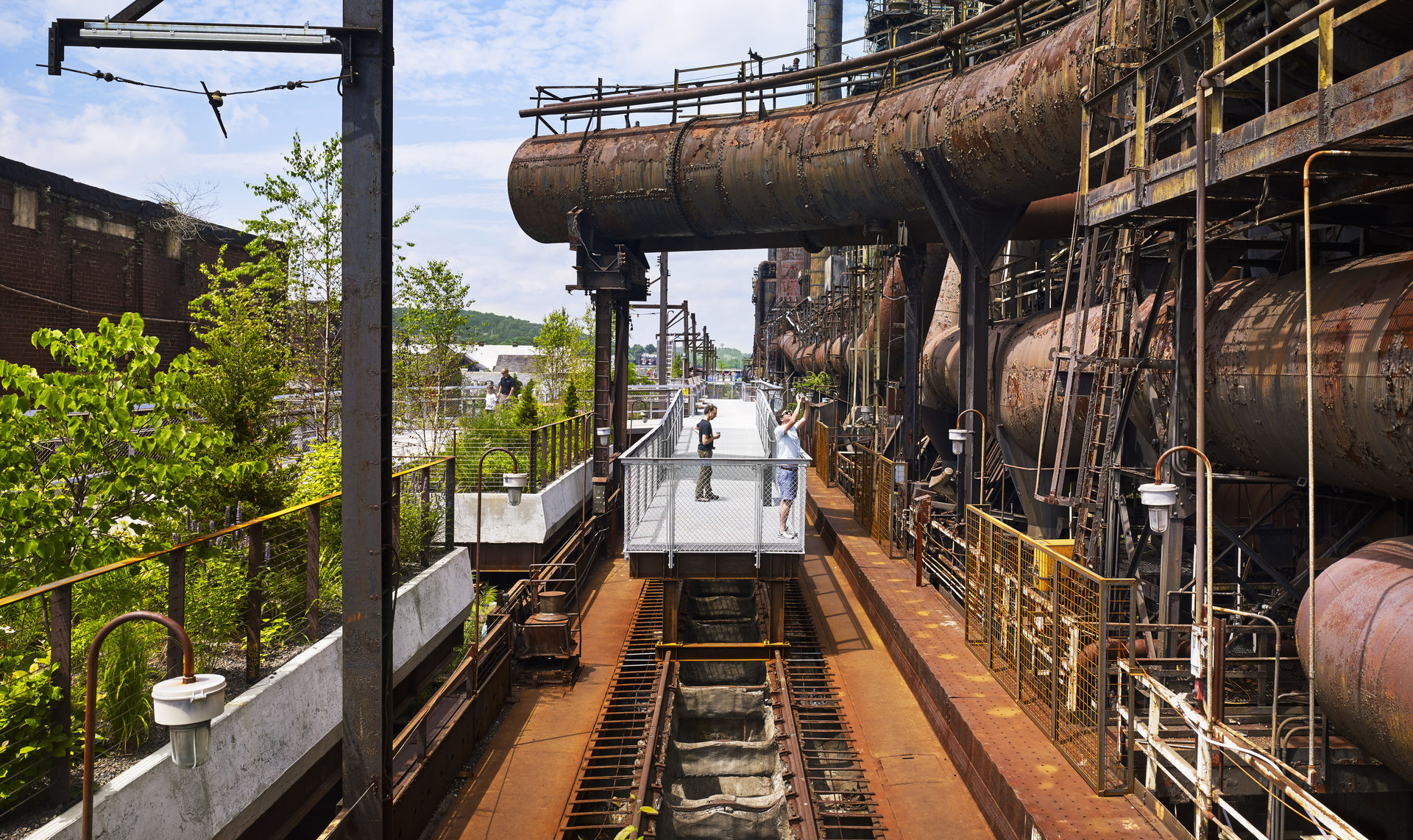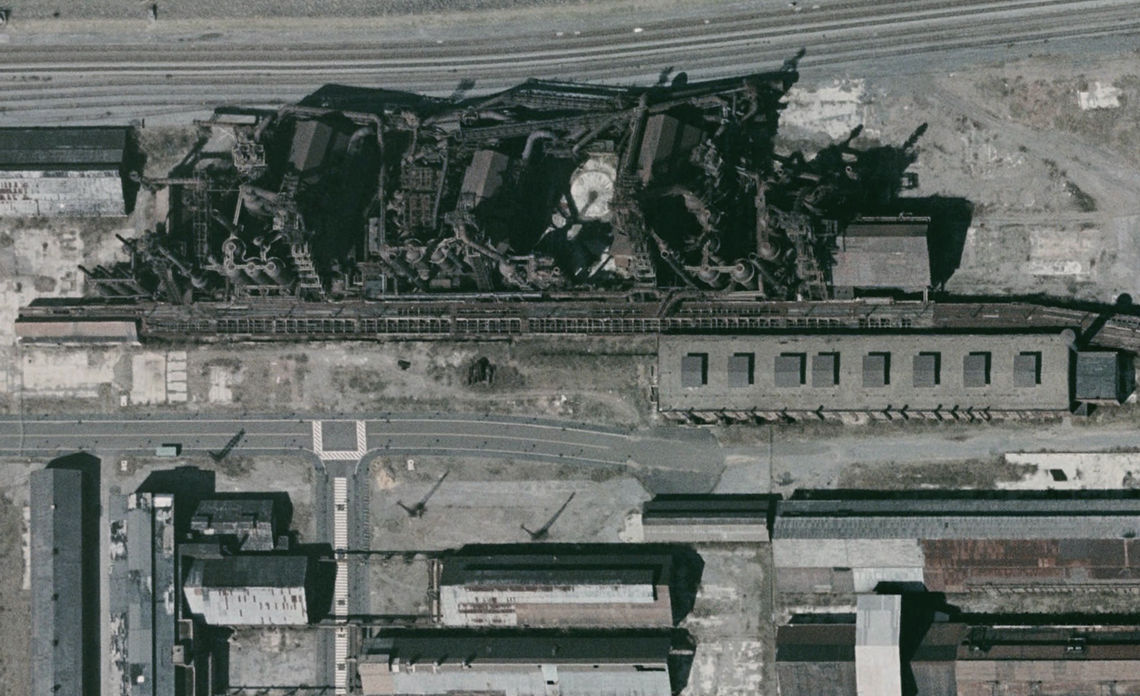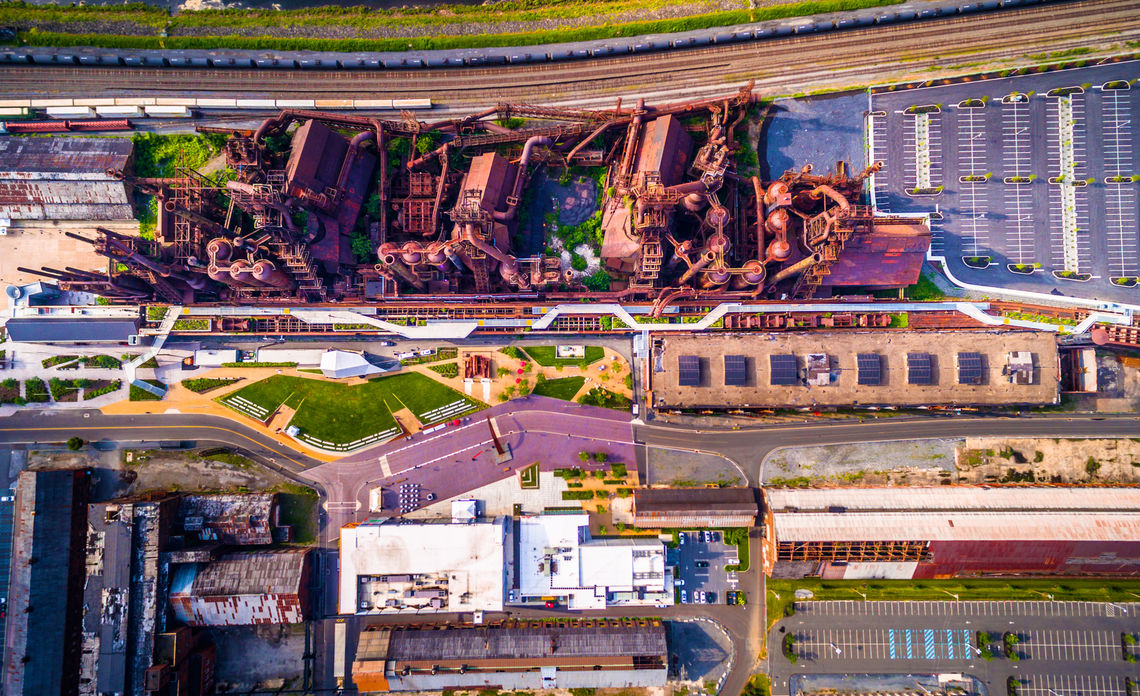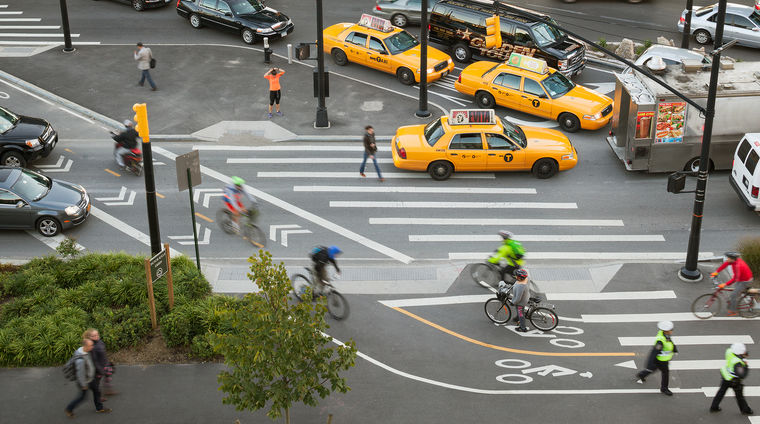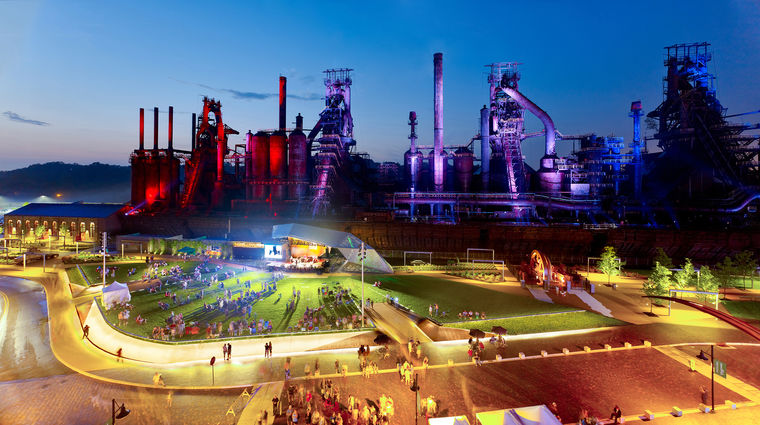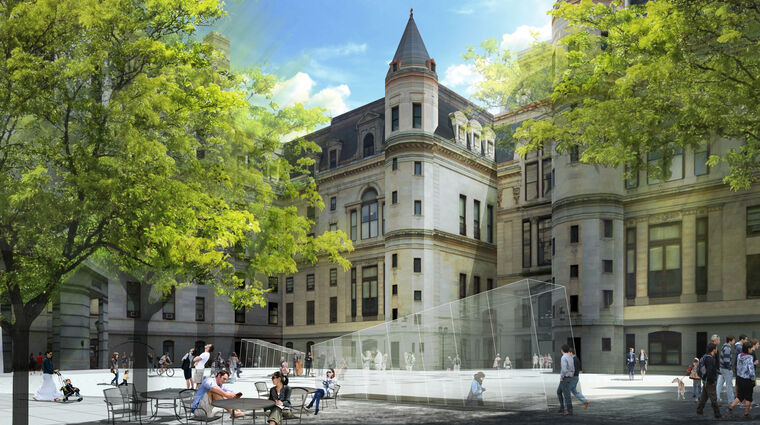Hoover-Mason Trestle
The Bethlehem Steel plant was a powerful symbol of America’s manufacturing leadership in the Industrial Revolution. As the plant expanded into an industrial giant, additional iron ore handling facilities were necessary to increase production. Due to the over-crowding of buildings around the plant’s blast furnaces, the Hoover-Mason Trestle (HMT) was developed to deliver over 90 tons of iron ore daily to the massive blast furnaces which ran continuously - night and day, seven days a week - and required a constant feeding of materials that were heated to over 3000 degrees Fahrenheit. From its completion in 1912 until the Bethlehem Plant ceased operation in 1995, the dual gauge HMT functioned effectively and consistently, and still stands quietly yet prominently as a reminder of its industrial magnificence. Breathing new life into the campus, the Trestle once again provides an up-close, interpretive, and powerfully personal view of the elaborate and complex Bethlehem Steel plant.
In 2011, the 10-acre central core directly in front of the HMT and blast furnaces was redeveloped into SteelStacks Arts and Cultural Campus. As the next phase of this adaptive reuse success, the HMT reopened in June of 2015 as a repurposed 1/3 mile long elevated pedestrian-oriented promenade that supports circulation, historic interpretation and passive recreation and entertainment uses.
To take a walk on the Trestle is to take a walk through history.
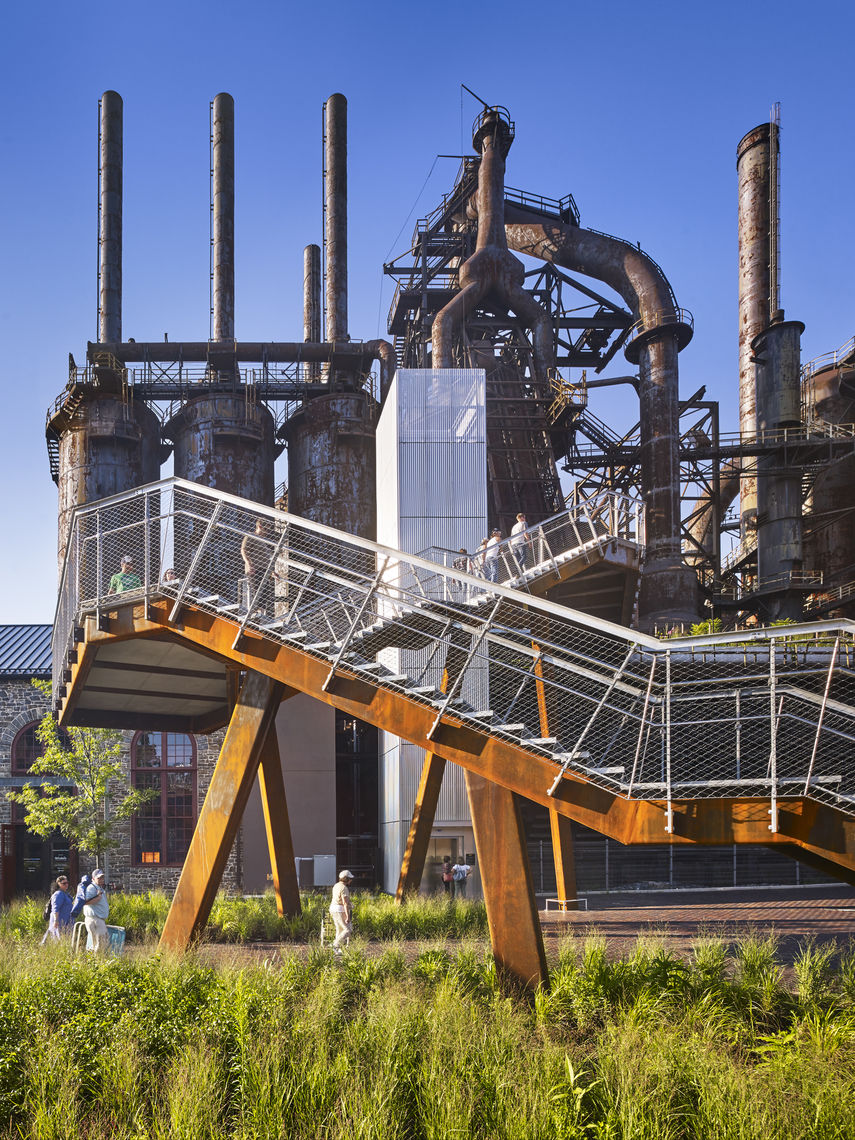
“The steel company is gone, but those structures are still there to be enjoyed by millions and millions of people every day. That legacy will not be so easily erased.”
- Lynn Beedle, Bethlehem Steel Engineer
Respecting the linearity of the rail tracks on top of the HMT, metal grating walkways run parallel immediately above the existing tracks, encouraging people to look down into the large existing bins below. These walkways are interrupted by the introduction of angular concrete gathering spaces that frame and focus views, directing your attention outward to items of historical and contextual importance. Finally, these spaces are buffered and enhanced by concrete planters that contain native landscaping to direct and shield specific views.
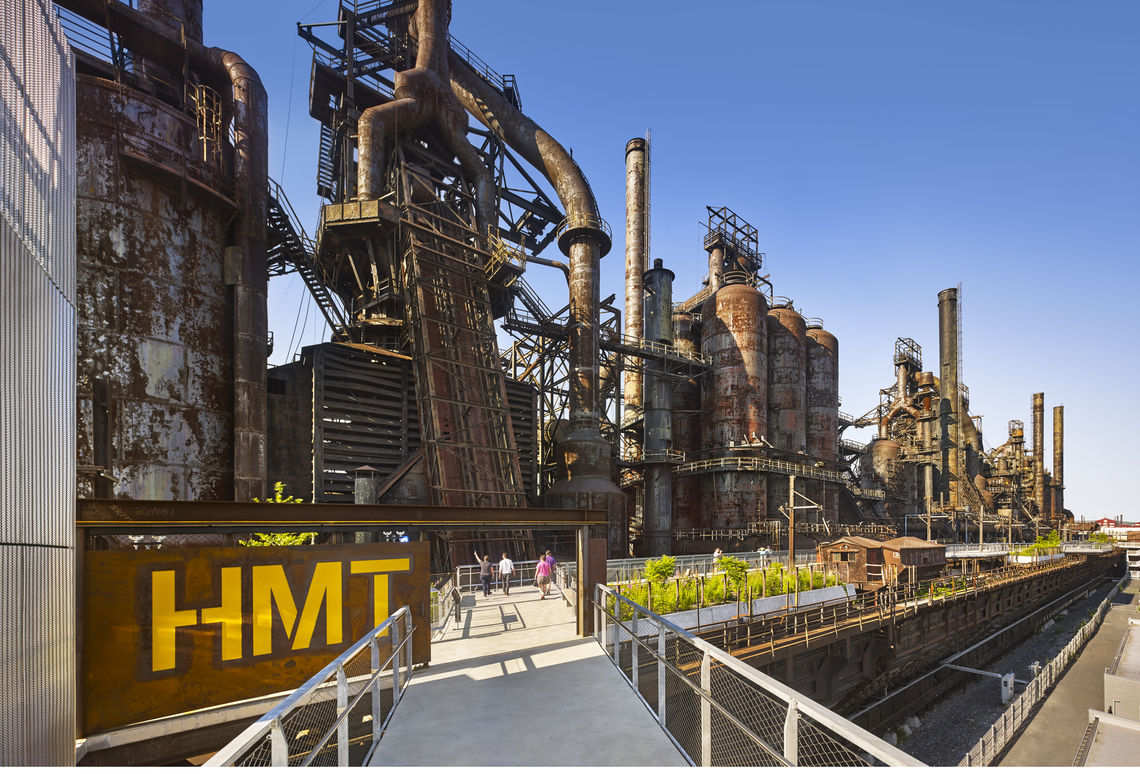
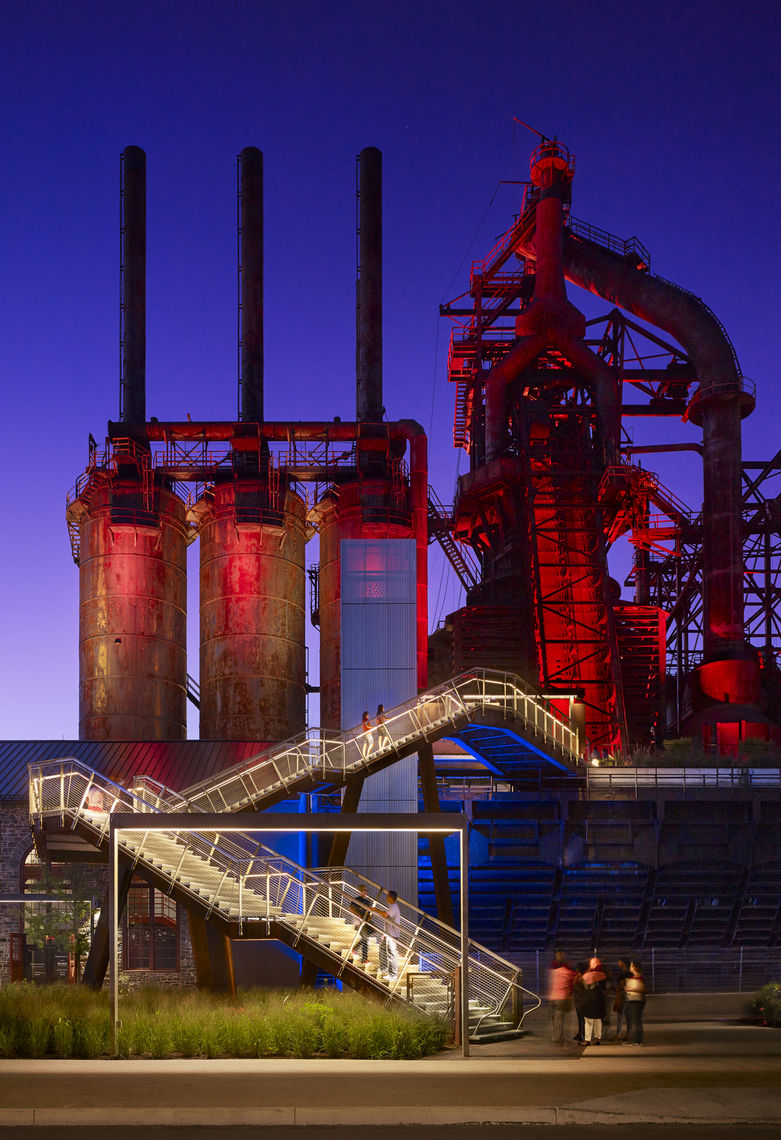
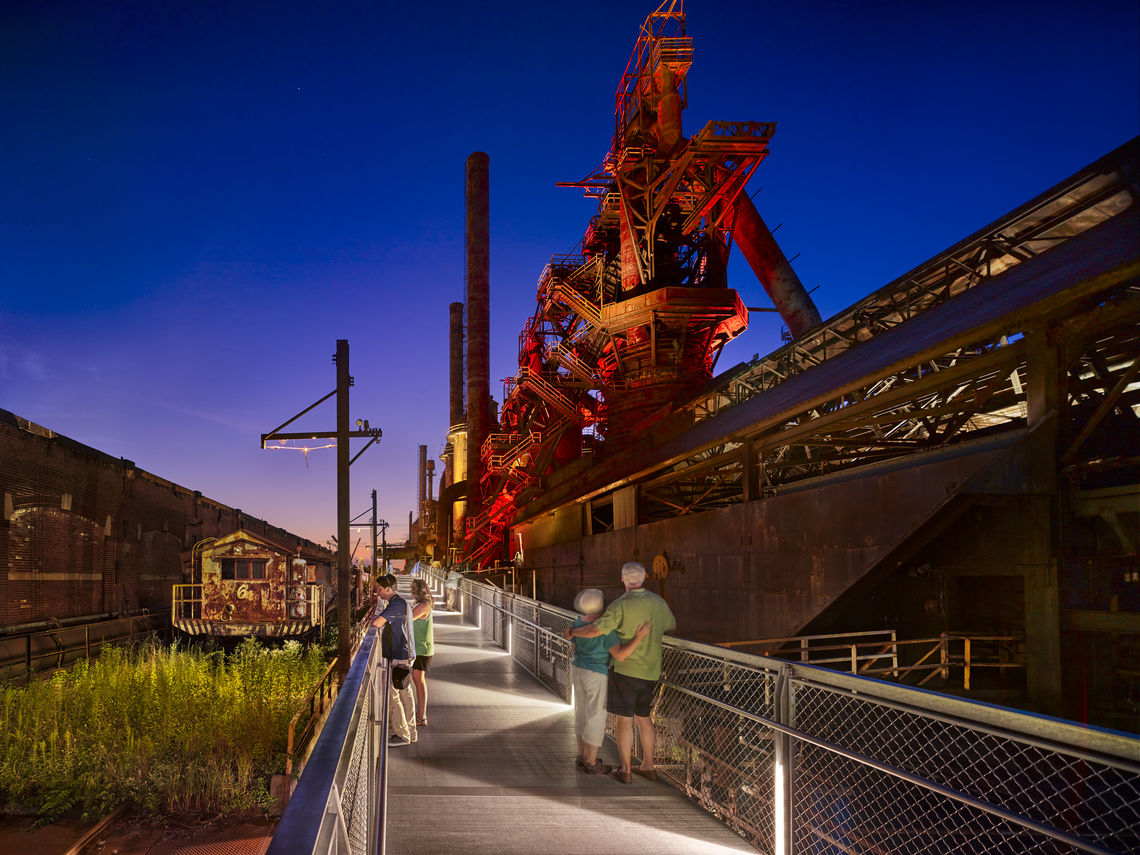
At every point along the HMT, one’s focus is pulled above, below, and outward across the datum of the existing rail tracks. These new components vary not only in their materiality, but also in their vertical height above the tracks. This unique relationship between the component tectonics offers visitors a revealing and interpretive understanding of the site and design.
Similar to the complex relationships between the HMT and the larger Bethlehem Steel plant, the design of the repurposed Hoover-Mason Trestle creates a three dimensional system of dynamic interactions at a human scale. All new elements were designed at a datum above the existing tracks, creating an archaeological experience over the artifact below.
This allows for a complete experience that pays homage to the site as a historic landmark by treading lightly over the existing structure, while also providing a unique and new pedestrian experience. The walkway offers a glimpse into the rich history of Bethlehem Steel, and is enhanced by a self-guided tour with interpretative physical signage as well as an interactive digital application, accessible on any mobile device, delivering audio tours, oral histories and a database of historical images and interpretive data.
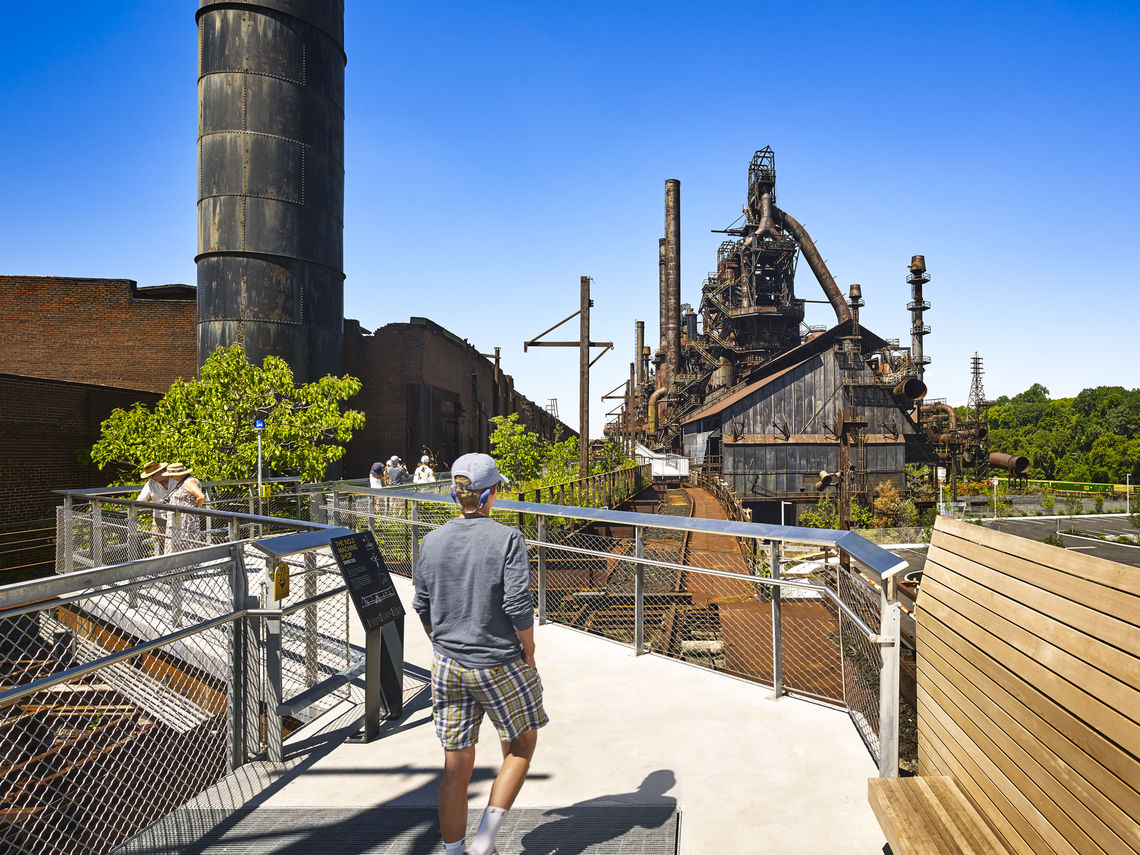
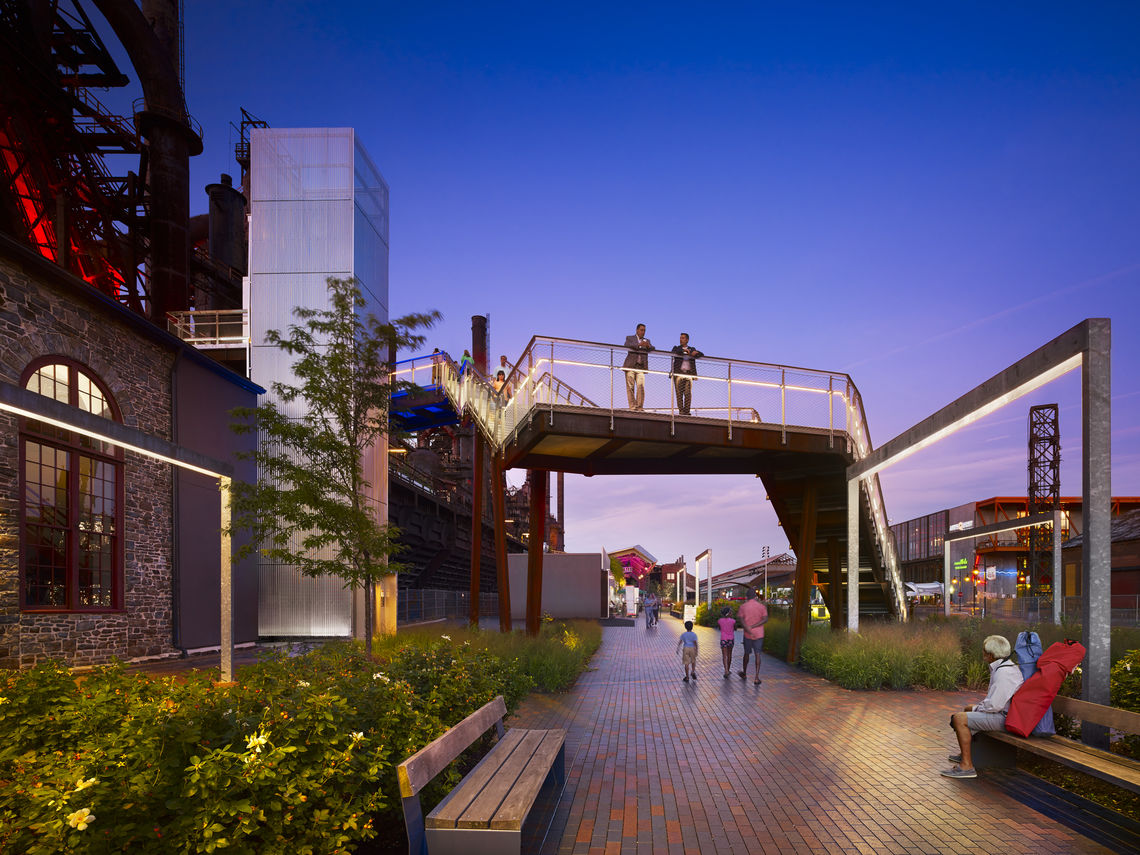
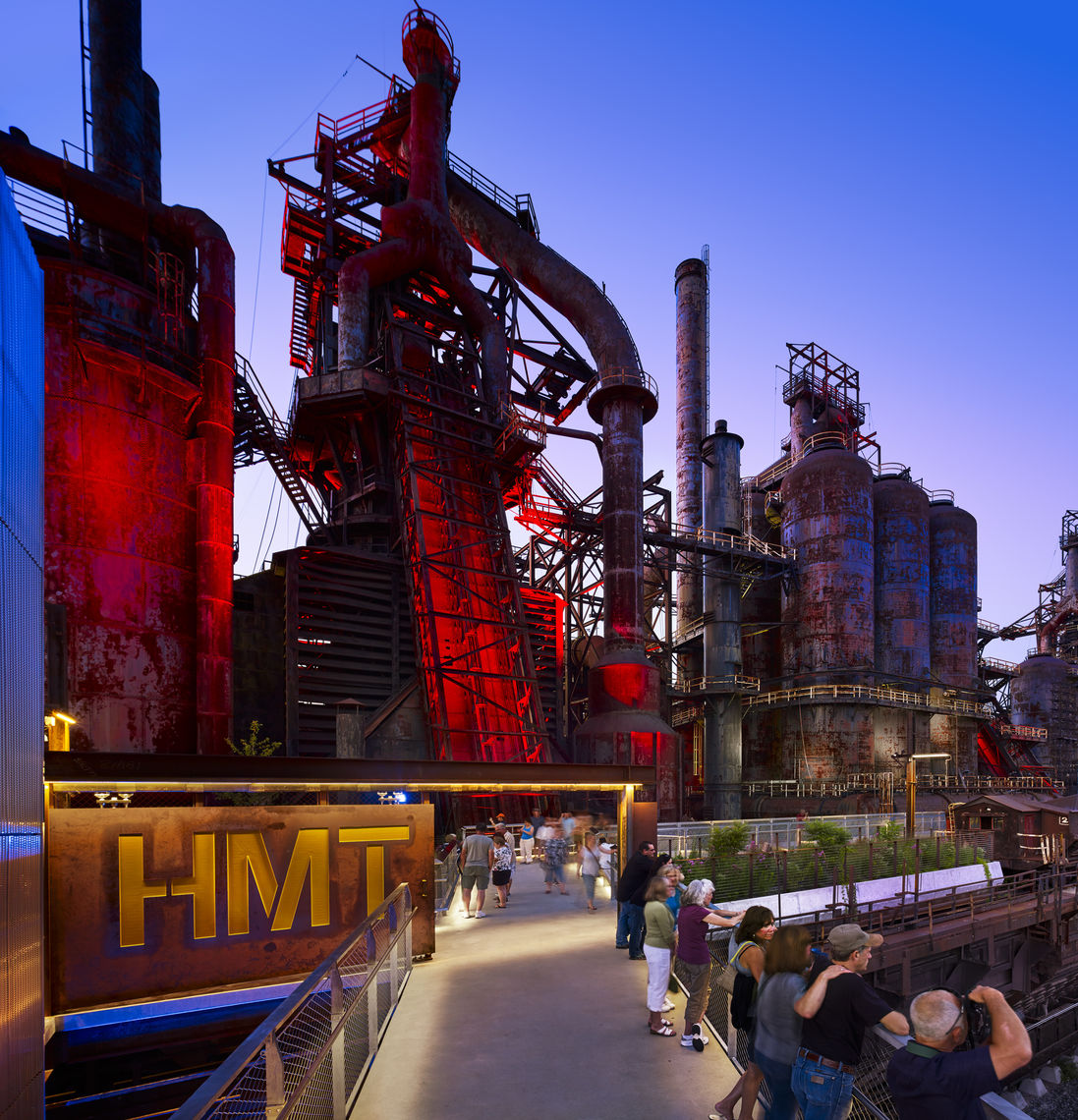
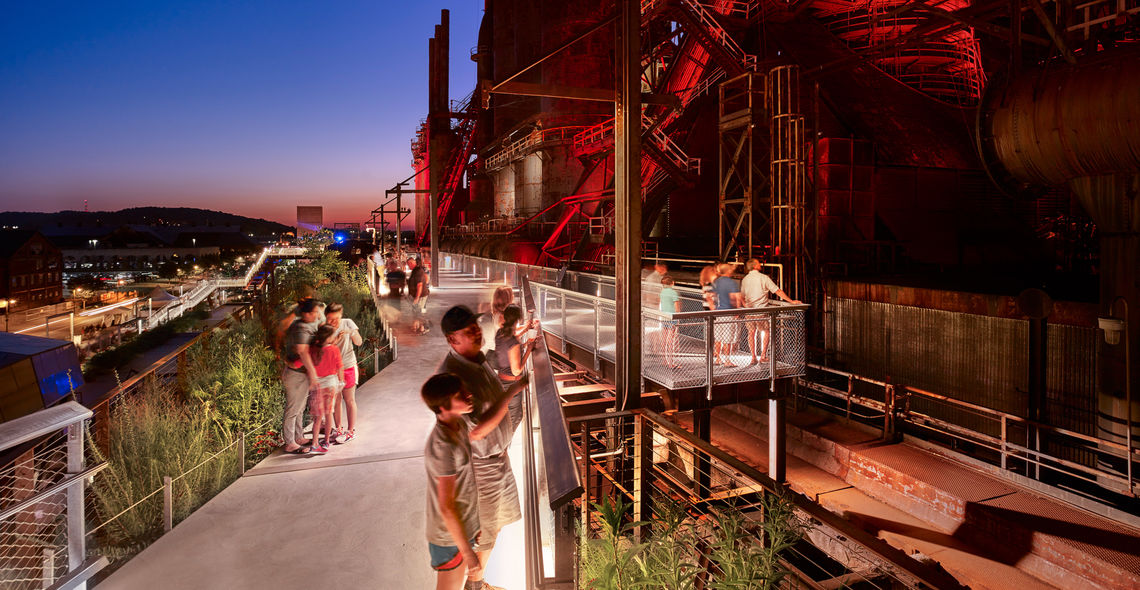
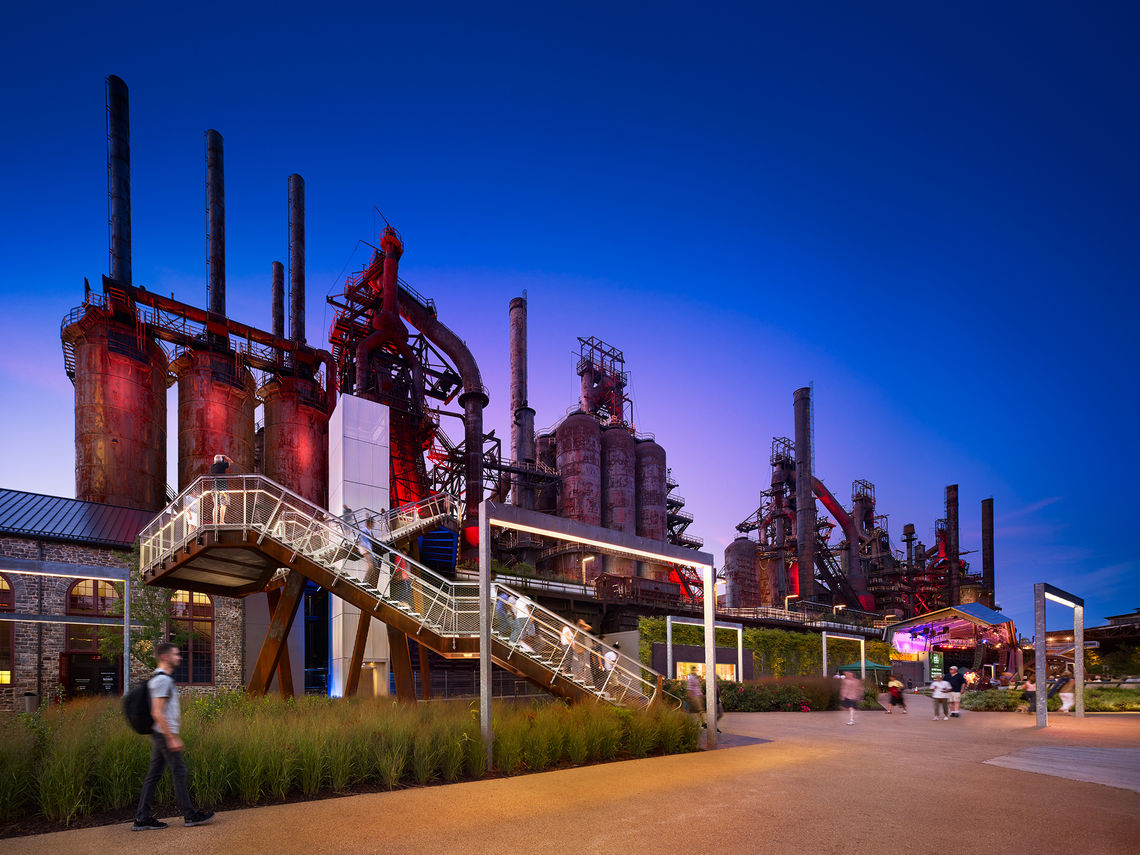
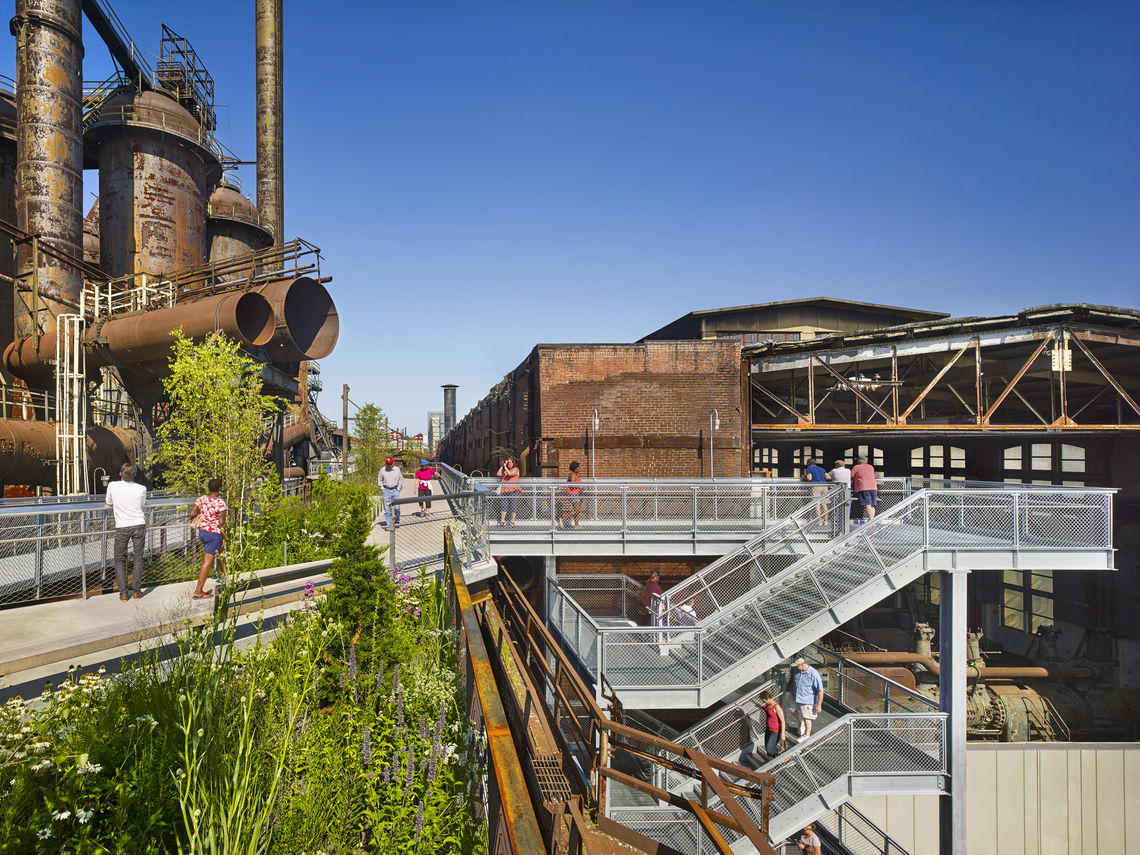
Much like the Hoover-Mason Trestle worked as a component of the much larger Bethlehem Steel plant system, the reinvented and repurposed HMT enhances the community by preserving the history and integrity of this magnificent site, and allowing visitors the opportunity to stand at the foot of the majestic and iconic Bethlehem Steel blast furnaces from atop the Hoover-Mason Trestle.
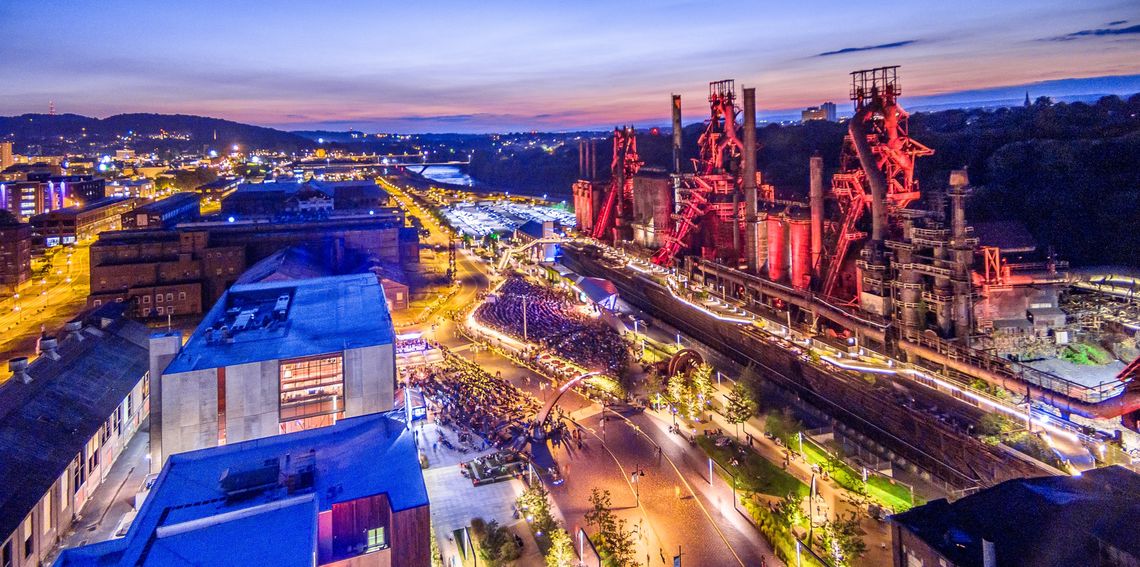
Awards
Contruction Management Association of America Mid Atlantic, Infrastructure Award, 2016
Urban Land Institute Philadelphia, Willard G. Rouse III Award for Excellence. 2016
AIA Philadelphia, Merit Award, 2015
AIA Philadelphia, Merit Award, 2013
Related Projects
We believe parks and open spaces should improve quality of life, foster economic development, and protect the environment.
